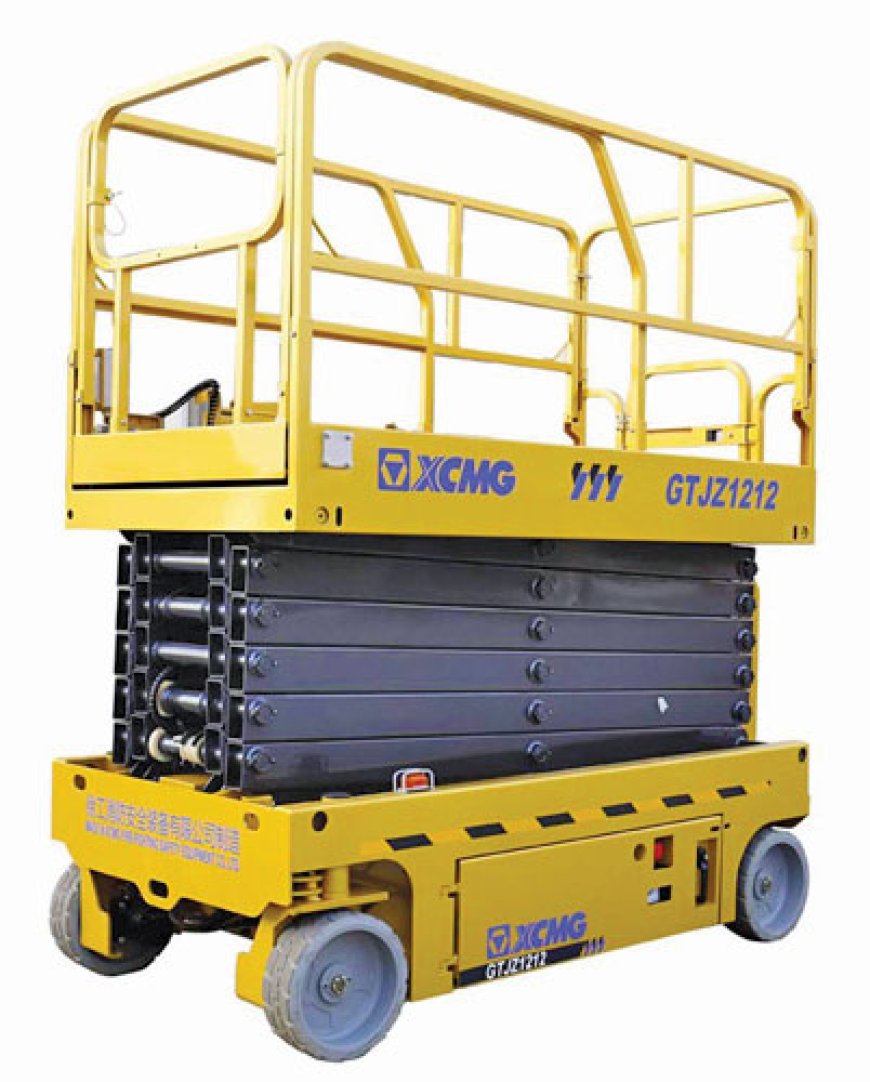Our Aerial Work Platform models are designed to offer flexibility and precision in various working conditions.

What types of Aerial Work Platforms (AWPs) does your company manufacture?
Schwing Stetter manufactures a diverse range of Aerial Work Platforms (AWPs), catering to various industry requirements. Our lineup includes scissor lifts, boom lifts, telescopic booms, and articulated booms. These AWPs are designed for different working environments, providing flexibility, reach, and accessibility for tasks at various heights and angles.
Can you provide a brief overview of the features and specifications of your AWP models? Our AWP models feature state-of-the-art technology and are designed with user safety in mind. We focus on smooth proportional control to ensure seamless and precise movement. Our booms offer 360-degree rotation and extendable jibs for enhanced flexibility. The platforms are equipped with sturdy guardrails, non-slip surfaces, and tool trays to improve operator comfort and safety.

What are the weight capacities and working heights of your AWP models?
Our Aerial Work Platform models are designed to offer flexibility and precision in various working conditions. We have AWP models with platform heights of 22 meters, ideal for projects requiring significant reach. The 18-meter platform height option provides a versatile middle ground, suitable for various tasks. For smaller-scale projects, our 12-meter platform height AWP offers compactness without compromising on capability. The Telescopic Handlers in our AWP range feature a unique design with zero tail swing, allowing for optimal performance in narrow spaces and confined working environments. This design advantage provides added flexibility and reduces the risk of collision with surrounding structures, enhancing safety and efficiency on-site. With these capabilities, Schwing’s AWP range is designed to meet the demands of a wide array of projects, from high-rise construction to intricate industrial tasks.
What safety features are integrated into your AWP designs to ensure operator safety? What kind of operator training do you provide for the safe operation of your AWP models?
Safety is our top priority. Our AWPs are equipped with multiple safety features, including overload protection systems, emergency stop controls, anti-tip devices, and automatic leveling systems. We provide comprehensive operator training programs that cover safe operating practices, emergency procedures, and maintenance guidelines. Our training ensures operators are well-versed in safety protocols and can maximize productivity while minimizing risks.
What are the innovative technologies or features, advanced control systems incorporated into your AWP designs for enhanced performance or efficiency?
Schwing’s AWPs are designed with advanced control systems that offer smooth proportional control for precise operation. We incorporate IoT and telematics for real-time monitoring, allowing operators to track performance metrics and identify maintenance needs. Our booms use innovative hydraulics for smoother extension and retraction, enhancing efficiency and reducing wear and tear.

What type of customer support do you offer, both pre-sale and post-sale?
Schwing Stetter provides comprehensive customer support, both pre-sale and post-sale. Our pre-sale services include equipment consultations, demonstrations, and custom configurations. Post-sale, we offer technical support, maintenance services, spare parts supply, and warranty coverage. We also conduct customer feedback surveys to ensure continuous improvement in our support services.
How do you differentiate your AWP products from competitors in the market? We differentiate our AWP products by focusing on innovation, safety, and customer support. Our advanced control systems, robust safety features, and IoT integration set us apart. Additionally, our commitment to customer training, after-sales support, and maintenance services creates a unique value proposition. We also maintain rigorous quality standards to ensure reliability and durability.
What trends do you foresee in the AWP industry in the coming years?
The AWP industry is moving toward increased automation, IoT integration, and sustainability. We expect more electric and hybrid-powered AWPs to meet environmental regulations and reduce operational costs. Advanced control systems and safety features will continue to evolve, offering operators more efficiency and flexibility. Additionally, the rental market for AWPs is likely to grow as businesses seek cost-effective solutions for their projects.
Are there any specific challenges or opportunities you face as a manufacturer of AWPs in the construction industry?
Challenges in the AWP industry include managing fluctuating demand, navigating regulatory changes, and addressing environmental concerns. Opportunities lie in embracing technology and sustainability, such as offering electric-powered equipment and integrating advanced telematics. As a manufacturer, we aim to capitalize on these opportunities by investing in R&D and expanding our product range to meet market trends and customer needs.








